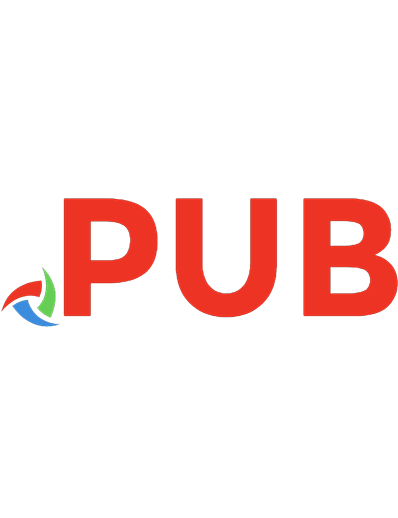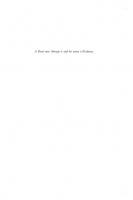Magic and Divination in Early Islam 9780860787150, 086078715X, 9781351921015, 9781315250090, 9781351921022, 9781351921008, 1351921010, 1315250098, 1351921029, 1351921002
Ashgate, 2004. — 394 p.Magic and divination in early Islam encompassed a wide range of practices, including belief in ji
143 27 15MB
English Pages [223] Year 2004
Polecaj historie
Citation preview
,
THE FORMATION OFTHE CLASSICALISLAMIC WORLD
THE FORMATION OFTHECLASSICALISLAMIC WORLD
General Editor: Lawrence I. Conmd
General Editor: Lawrence I. Conrad
1 2 3 4 5 6 7 8 9 10
Byzant.ium before the Rise of Islam The Sasanian East before t.he Rise of Islam
Averil Cameron Shaul Shaked
The Arabs and Arabia on the Eve of Islam The Life of Mul].ammad
11
Production and the Exploitation of Resources Manufacturing and Labour Trade and Exchange in Early Islam Property and Consumption in Early Islamic Society Cities in the Early Islamic World Nomads and the Desert in the Early Islamic World Society and the Individual in Early Islam Muslims and Others in Early Islamic Society The Christian Communities in the Eal'ly Islamic World The Jewish Communities of the Early Islamic World Archaeology and Early Islam Early Islamic Numismatics and Monetary History Early Islamic Art and Architecture The Qur'an: Style and Contents The Qur'an: Formative Interpretation The Development of Islamic Ritual The Formation of Islamic Law ijadrth: Origins and Development Early Islamic Historiogl'aphical Traditions Early Islamic Theology Eschatology and Apocalyptic in Early Islam Early Islamic Visions of Community ShT'ism:, Origins and Early Development Kharijite Movements in Early Islam The Emergence of Islamic Mysticism The Islamic Philological Tradition Early Arabic Poetry and Poetics Early Arabic Prose Literature The Rise of Islamic Philosophy The Rise of Arab-Islamic Medicine The Exact Sciences in Early Islam Magic and Divination in Early Islam Education and Learning in the Early Islamic World The Early Islamic Manuscript Thadition Early Islamic North Africa The Formation of al-Andalus I The Formation of al-Audalus II The Modern Study of Early Islam
Frank E. Peters Uri Rubin Pred M. Donner Frtd M. Donner R. Stephen Humphreys Michael Bonner C.E. Bosworth David Waines Michael G. Morony Michael G. Morony A.L. UdolJitc}l Baber Johansen Hugh J(ennedy Hugh Kennedy to be announced Robert E. Hoyland Sidney H. Griffith David Wauerstein Donald Whitcomb Michael Bates Jonathan Bloom Andrew Rippin Andrew Rippin G.R. Hawting Wael B. Hallaq Harald Motzki Lawrence 1. Conrad Josef van Ess Wilferd Madelung Wadad al-Qa~i Etan [( ohlberg Ridwan al·Saiid Bernd Radtke Ramzi Baalbaki Suzanne Stetkevych Fedwa Malti-Douglas ElJerett Rows on Lawrence I. Conrad Jamil Ragep Emilie Savage-Smith Claude Gilliot Jan Just Witkam Elizabeth Savage Manuela Mann M. Fierro / J. Samso Lawrence I. Conrad
12 13 14 15 16 17 18 19 20 21 22 23 24 25 26 27 28 29 30 31 32 33 34 35 36 37 38 39 40 41 42 43 44 45 46 47 48
The Expansion of the Early Islamic State The Articulation of Islamic State Structures Problems of Political Cohesion in Early Islam Arab-Byzantine Relations in Early Islamic Times The Turks in the Early Islamic World
Patterns of Eyeryday Life
Volume 42
Magic and Divination in Early Islam III
edited by Emilie Savage-Smith
~
ASHGATE VARIORUM
,
,'
\)\l\ t:, - Lc...
"£:,'?
\'lO,S;
·MdS
M3Lf
CONTENTS
This edition copyright© 2004 by Ashgate Publishing Limited, and Introduction by Emilie Savage-Smith. For copyright of individual articles refer to the Acknowledgements.
';),1J:)Lj'l Published in the series The Formation ofthe Classical Islamic World by Ashgate Publishing Limited Gower House, Croft Road Aldershot, Hants GU113HR Great Britain
Acknowledgements
vii
General Editor's Preface
xi
1.
2. ISBN 0--86078--715-X 3. British Library CIP Data Magic and Divination in Early Islam - (The Formation ofthe Classical Islamic World) 1. Magic, Islamic 2. Magic - Islamic countries - History - To 1500 3. Divination - Islamic countries - History - To 1500 I. Savage-Smith, Emilie 133.4 '3' 0917671 US Library of Congress CIP Data Magic and Divination in Early Islam / edited by Emilie Savage-Smith p. cm. Includes bibliographical references. 1. Magic - Religious aspects - Islam. 2. Occultism - Religious HAAVARD u Islam. 3. Divination - Islamic Empire - History. lI8P'IYS'avag~-Smith, Emilie. MAR G .J3~,wp .. M25M342003 'M¥!1f'9- dc22 2003060079
xiii
Introduction
Ashgate Publishing Company Suite 420 101CherryStreet Burlington, VT 05401-4405 USA
4.
5.
6.
7.
..
I II
8.
9.
I I
This volume is printed on acid-free paper. Printed and bound in Great Britain by The Cromwell Press, Trowbridge, Wiltshire f
Beliefs in Spirits among the Pre-Islamic Arabs Joseph Henninger
1
Hermes and Harran: The Roots of Arabic-Islamic Occultism Francis E. Peters
55
The Theory of Magic in Healing Michael W. Dols
87
~/
The Rod of Moses in Arabic Magic A. Fodor The Decipherment of Arabic Talismans Tewfik Canaan
v/
103
125
Islamic Seals: Magical or Practical? Venetia Porter
179
Weather Forecasting in the Arabic World Charles Burnett
201
Islamic Geomancy and a Thirteenth-Century Divinatory Device: Another Look Emilie Savage-Smith and Marion B. Smith
211
Ibn Taymiyya on Astrology: Annotated Translation of Three Fatwas Yahya J. Michot
.277
~.
I vi
CONTENTS --------------------10.
The Role of the Astrologer in Medieval Islamic Society George Saliba
General Index
341 371
I-
I
I
ACKNOWLEDGEMENT",S The chapters in this volume are taken from the sources listed below. The "dilm and publishers wish to thank the authors, original publishers or other I'llpyright holders for permission to use their material as follows: (:IIAPTER
1: Translation of Joseph Henninger, uGeisterglaube bei den vorislamis-
dlUn Arabern", in his Arabica Sacra (Gattingen, 1981), pp. 118-69. Copyright © IORl Vandenhoeck und Ruprecht Verlag. Translation by Gwendolyn Goldbloom; Copyright © 2003 Ashgate Publishing Ltd. CIIAPTER 2: Francis E. Peters, "Hermes and Harran: The Roots of Arabic-Islamic Occultism", in Michel Mazzaoui and Vera B. Moreen, eds., Intellectual Studies 011
II
Islam: Essays Written in Honor of Marlin B. Dickson, Professor of Persian
Studies, Princeton University (Salt Lake City, 1990), pp. 185-215. ~
I i5 ~
~
II
ii r
I" I,
II,. I
"•
CHAPTER 3: Michael W. Dois, "The Theory of Magic in Healing", in his Majniin: /./Ie Madman in Medieval Islamic Society, ed. Diana E. Immisch (Oxford, 1992), pp.
261-76. Reprinted by permission of Oxford University Press. GHAPTER 4: A. Fodor, "The Rod of Moses in Arabic Magic", Acta Orientalia Academiae Scientiarwn Hungaricae 32 (Budapest, 1978), pp. 1-21. CHAPTER
5: Tewfik Canaan, "The Decipherment of Arabic Talismans", Berytus 4
(Beirut, 1937), pp. 69-110; 5 (Beirut, 1938), pp. 141-51. CHAPTER 6: Venetia Porter, "Islamic Seals: Magical or Practical", in Alan Jones,
ed., University Lectures in Islamic Studies 2 (London, 1998), pp. 135-49 and Figs. 8.1-8.13. Copyright © [998 Venetia Porter. CHAPTER 7: Charles Burnett, "Weather Forecasting in the Arabic World". First
publication. Copyright
© 2003 Charles Burnett.
CHAPTER 8: Emilie Savage-Smith and Marion B. Smith, "Islamic Geomancy and a Thirteenth-Century Divinatory Device", original version published in UCLA Studies
in Near Eastern Culture and Society 2 (Lancaster, US, Undena Publications, 1980); revised version copyright © 2003 Emilie Savage-Smith and Marion B. Smith. Plates 1-6,8-12. Copyright © The British Museum.
II Ii
j !' II
CHAPTER 9: Yahya J. Michot, "Ibn Taymiyyaon Astrology: Annotated Translation of Three Fatwas", lournal of Islamic Studies II (Oxford, 2000), pp. 147-208. CHAPTER 10: George Saliba, "The Role of the Astrologer in Medieval Islamic Society", Bulletin d"tudes orientales 44 (Damascus, 1992), PI'. 45-67. Figs. 1, 2,
1'" I,
'''1
I'
I
i
viii
ACKNOWLEDGEMENTS ------------___
I ~
4,6: All rights reserved, The Metropolitan Museum of Art; Fig. 3, Freer Gallery of Art, Smithsonian Institution, Washington, D.C.: Purchase, FI948.8; Fig. 5 © 2002 Museum of Fine Arts Boston. l
Every effort has been made to trace all the copyright holders, but if any have been inadvertently overlooked the publishers will be pleased to make the necessary arrangement at the first opportunity.
!
!
i I
I
I
PUBLISHER'S tifOTE has been main-• The pagination of articles originally pu b],IS he d'In E n~ I'sh I • • I,ained for this volume. In articles translated into Engltsh, the onglllal paglItation has been indicated in the text in bold-face type.
, I
Ii I
I
I I!
1
I
GENERAL EDITOR'S PREFACE Since the days of Ignaz Goldziher (1850-1921), generally regarded as the fOllnder of Islamic studies as a field of modern scholarship, the formative period in Islamic history has remained a prominent theme for research. In Goldziher's time it was possible for scholars to work with the whole of the field and practically all of its available sources, but more recently the in''''easing sophistication of scholarly methodologies, a broad diversification in research interests, and a phenomenal burgeoning of the catalogued and published source material available for study have combined to generate an illcreasing "compartmentalisation" of research into very specific areas, each with its own interests, priorities, agendas, methodologies, and controversies. While this has undoubtedly led to a deepening and broadening of our understanding in all of these areas, and hence is to be welcomed, it has also t.ended to isolate scholarship in one subject from research in other areas, and even more so from colleagues outside of Arab-Islamic studies, not to mention "llIdents and others seeking to familiarise themselves with a particular topic for the first time. The Formation of the Classical Islamic World is a reference series that ,ceks to address this problem by making available a critical selection of the published research that has served to stimulate and define the way modern scholarship has come to understand the formative period of Islamic history, for these purposes taken to mean approximately AD 600-950. Each of the volumes in the series is edited by an expert on its subject, who ha.s chosen a IIlImber of studies that taken together serve a.s a cogent introduction to the state of current knowledge on the topic, the issues and problems particular t.o it, and the range of scholarly opinion informing it. Articles originally published in languages other than English have been translated, and editors have provided critical introductions and select bibliographies for further reading. A variety of criteria, varying by topic and in accordance with the judgements of the editors, have determined the contents of these volumes. In some cases an article has been included because it represents the best of current scholarship, the "cutting edge" work from which future research seems most likely to profit. Other articles-certainly no less valuable contributionshave been taken up for the skillful way in which they synthesise the state of scholarly knowledge. Yet others are older studies that-if in some ways now superseded-nevertheless merit attention for their illustration of thinking or conclusions that have long been important, or for the decisive stimulus
T , XII
- - - - ... (il':NHHAL HllI'I'()R'S I'HHI'ACE - - - -_ __
they have pl"Ovidl'd 1.0 "I·hola.r-iy disCII"iulI. Some volumes cover themes that have em"I'/~",1 ra.ir-iy f"('Celli.ly, and here it ha.s been necessary to include articleR frolll ""I.sid,, the period covered by the series, as illustrations of paradigms and methodologies that may prove useful as research develops. Chapters from single author monographs have been considered only in very exceptional ca.ses, and a certain emphasis has been encouraged on important studies that are less readily available than others. In the present state of the field of early Arab-Islamic studies, in which it is routine for heated controversy to rage over what scholars a generation ago would have regarded as matters of simple fact, it is clearly essential for a series such a.s this to convey some sense of the richness and variety of the approaches and perspectives represented in the available literature. An effort has thus been made to gain broad international participation in editorial capacities, and to secure the collaboration or colleagues I'''presenting differing points of view. Throughout the sedes, howI'ver, the mnge of possible options ror inclusion ha.5 been very large, and it is of eourse impossible to accomlllodate all of the outstanding I'osearch that 11










